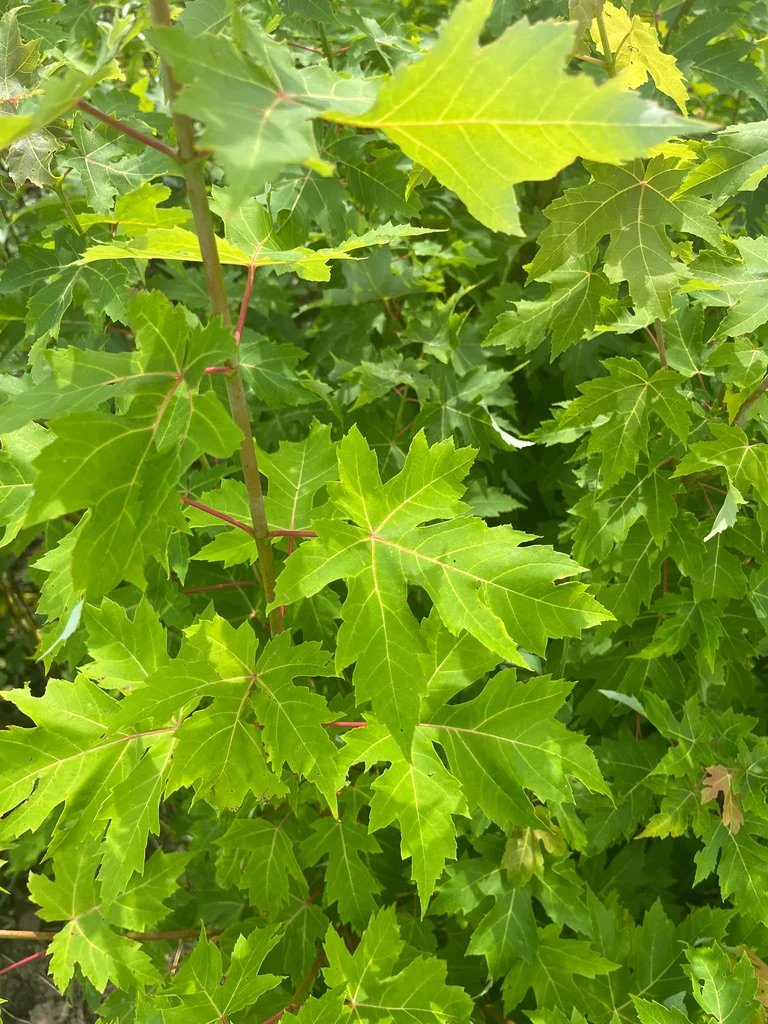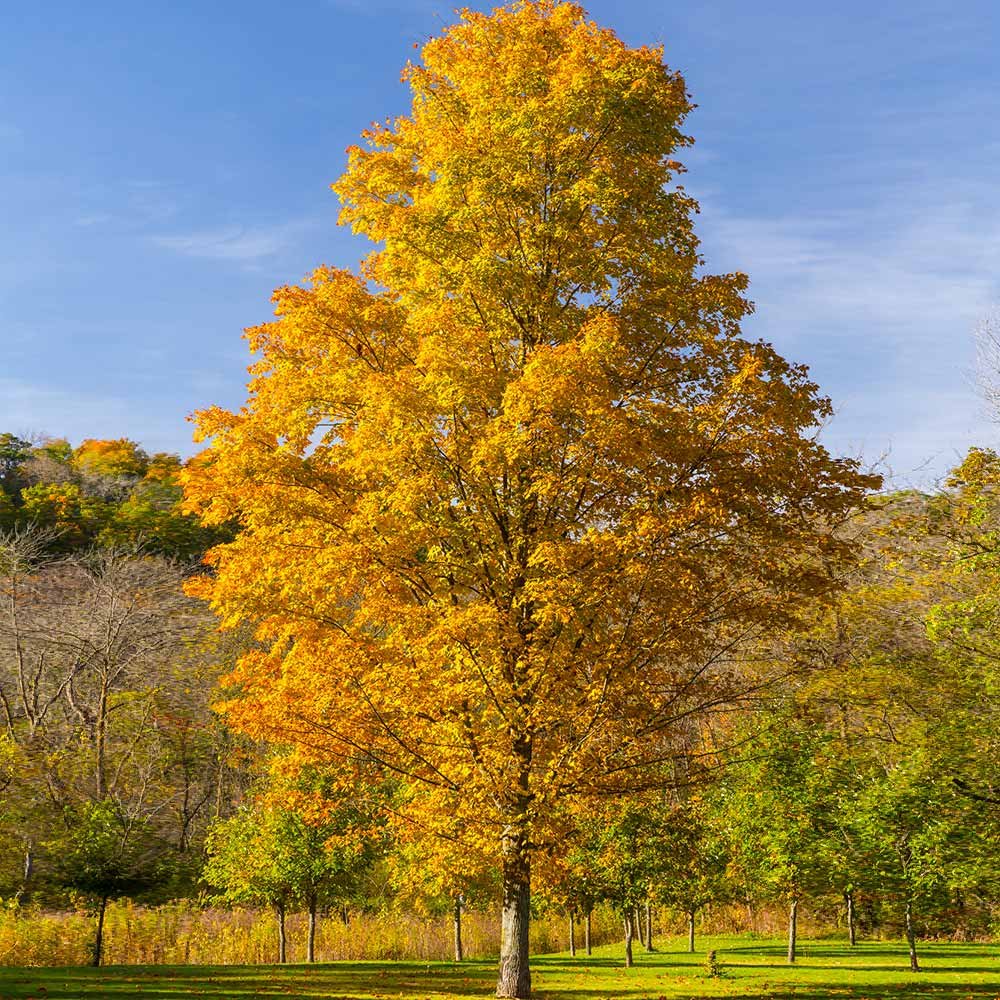Sweet Sap Silver Maple
Acer sachirinum ‘Sweet Sap.’ This tree comes to us from St. Lawrence Nurseries in upstate NY. The story is an interesting one:
“In the 1960’s H. Cedric Larsson, a forester with the Ontario Department of Lands and Forests found a cultivar of Acer saccharinum (Silver Maple) with a notably high sugar content. The sap consistently tested in the 3-5% range (Sugar Maples typically test from 1-3%). Larsson gave some root cuttings to his plant breeder friends- one of whom was Fred Ashworth, the founder of St. Lawrence Nursuries in NY. Fred planted the cuttings and they quickly grew into trees. When Fred died in 1977, Bill MacKentley took over Fred’s home and nursery where one of Fred’s “Sweet Saps” was planted.
Finding a way to reliably yield offspring with the same high sugar content was difficult. Seedlings are too variable, root cuttings don’t yield very many trees and grafting would not work because of the interplay of root and stem during the annual process of sap rising. When tissue culture came on the broader horticultural scene, Bill decided to give this method a shot for the Sweet Sap. After years of trial and error, he finally found a lab that was able to reliably propagate the Sweet Sap Silver Maple.”
The tree is not meant as a replacement for sugar maples, but as an addition. Silver maples are can be planted in low, wet lands that are not hospitable to sugar maples. They are also very fast-growing, becoming tappable in 8-10 years.
Sold as a bare-root seedling, 12-24” tall.
Acer sachirinum ‘Sweet Sap.’ This tree comes to us from St. Lawrence Nurseries in upstate NY. The story is an interesting one:
“In the 1960’s H. Cedric Larsson, a forester with the Ontario Department of Lands and Forests found a cultivar of Acer saccharinum (Silver Maple) with a notably high sugar content. The sap consistently tested in the 3-5% range (Sugar Maples typically test from 1-3%). Larsson gave some root cuttings to his plant breeder friends- one of whom was Fred Ashworth, the founder of St. Lawrence Nursuries in NY. Fred planted the cuttings and they quickly grew into trees. When Fred died in 1977, Bill MacKentley took over Fred’s home and nursery where one of Fred’s “Sweet Saps” was planted.
Finding a way to reliably yield offspring with the same high sugar content was difficult. Seedlings are too variable, root cuttings don’t yield very many trees and grafting would not work because of the interplay of root and stem during the annual process of sap rising. When tissue culture came on the broader horticultural scene, Bill decided to give this method a shot for the Sweet Sap. After years of trial and error, he finally found a lab that was able to reliably propagate the Sweet Sap Silver Maple.”
The tree is not meant as a replacement for sugar maples, but as an addition. Silver maples are can be planted in low, wet lands that are not hospitable to sugar maples. They are also very fast-growing, becoming tappable in 8-10 years.
Sold as a bare-root seedling, 12-24” tall.
Acer sachirinum ‘Sweet Sap.’ This tree comes to us from St. Lawrence Nurseries in upstate NY. The story is an interesting one:
“In the 1960’s H. Cedric Larsson, a forester with the Ontario Department of Lands and Forests found a cultivar of Acer saccharinum (Silver Maple) with a notably high sugar content. The sap consistently tested in the 3-5% range (Sugar Maples typically test from 1-3%). Larsson gave some root cuttings to his plant breeder friends- one of whom was Fred Ashworth, the founder of St. Lawrence Nursuries in NY. Fred planted the cuttings and they quickly grew into trees. When Fred died in 1977, Bill MacKentley took over Fred’s home and nursery where one of Fred’s “Sweet Saps” was planted.
Finding a way to reliably yield offspring with the same high sugar content was difficult. Seedlings are too variable, root cuttings don’t yield very many trees and grafting would not work because of the interplay of root and stem during the annual process of sap rising. When tissue culture came on the broader horticultural scene, Bill decided to give this method a shot for the Sweet Sap. After years of trial and error, he finally found a lab that was able to reliably propagate the Sweet Sap Silver Maple.”
The tree is not meant as a replacement for sugar maples, but as an addition. Silver maples are can be planted in low, wet lands that are not hospitable to sugar maples. They are also very fast-growing, becoming tappable in 8-10 years.
Sold as a bare-root seedling, 12-24” tall.



